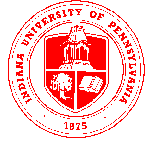
Dr. Narayanaswamy Bharathan Assist. Prof. of BiologyIndiana Univ. of PA |

Dr. Narayanaswamy Bharathan Assist. Prof. of BiologyIndiana Univ. of PA |
|
|
Current research projects include
1) Characterization and molecular analysis of the genome of
the Tomato Mosaic virus (ToMV) using reverse transcription PCR.
2) Comparative analysis of DNA homology to establish taxonomic
relationships of fungi. The specific genes, total nuclear DNS,
and or plasmids of various species or isolates could be compared
by sequencing or nucleic acid hybridization.
3) Past experience with Rhizoctonia solani system suggests
that transposable elements (Ty) exist in plant pathogenic fungi,
and they could be involved in the activation and inactivation
of genes for pathogenicity, or race specificity. Filamentous fungi
generally contain small fraction of repetitive sequences, which
are primarily composed of genes for rDNA, but which also include
Ty elements. If the homology that exists between Ty elements in
yeast and some higher eukaryotes is general, it will be possible
to detect these elements in filamentous fungi by searching for
homology between the non-ribosomal repetitive DNA and a cloned
Ty element. Alternatively, since chromosomal location of at least
some copies of Ty will differ among individuals, such elements
could be detected by RFLPs.
|
B.S. - 1977 G. B. Pant University of Agriculture & Technology, India Major: Plant Protection M.S. - 1980 G. B. Pant University of Agriculture & Technology, India Major: Plant Pathology Ph.D. - 1989 University of Maine, Orono, Maine Major: Molecular Virology |